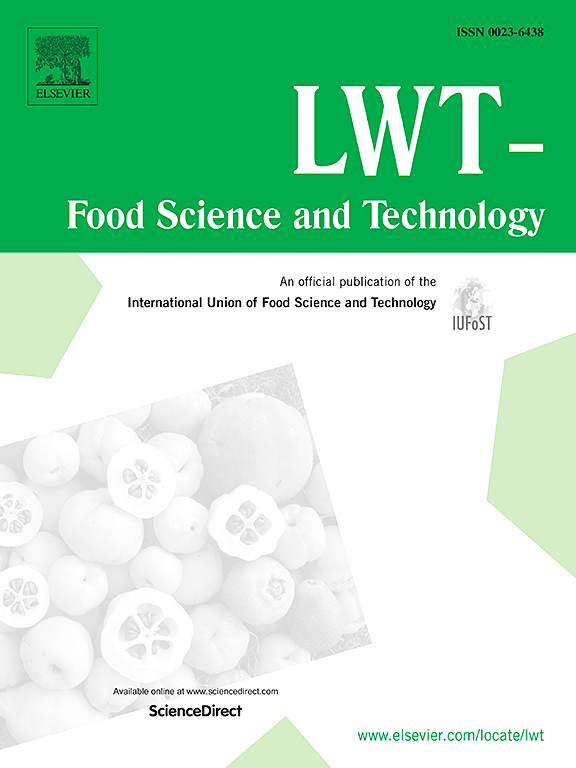基于 AuNR@Ag@SiO2-AuNP 组装的 SERS 侧流免疫分析法用于超灵敏检测谷物中的脱氧雪腐镰刀菌烯醇
IF 6
1区 农林科学
Q1 FOOD SCIENCE & TECHNOLOGY
引用次数: 0
摘要
鉴于脱氧雪腐镰刀菌烯醇(DON)造成的严重危害和广泛污染,在食品安全评估过程中量化其存在至关重要。在此,我们设计了一种由各向异性 AuNR@Ag 内核、超薄 SiO2 层和高表面覆盖率 AuNPs 卫星组成的核-壳-卫星纳米组装结构作为探针,该结构显示出卓越的 SERS 活性和高稳定性。在制备的核-壳-卫星纳米组装结构表面修饰抗 DON 抗体作为 SERS 免疫探针,利用基于 SERS 的侧向流动免疫分析法(LFIA)进行 DON 特异性检测,具有简便、快速、灵敏度高等优点。在最佳条件下,使用SERS-LFIA方法检测DON的检测限为0.053 fg/mL,线性检测范围为0.1 fg/mL至1 μg/mL。基于AuNR@Ag@SiO2-AuNP纳米结构的SERS-LFIA试纸条具有快速定量检测DON的巨大潜力,为高毒素霉菌毒素的痕量检测提供了参考。本文章由计算机程序翻译,如有差异,请以英文原文为准。
SERS-lateral flow immunoassay based on AuNR@Ag@SiO2-AuNP assembly for ultra-sensitive detection of deoxynivalenol in grain
In view of the serious harm and widespread pollution caused by deoxynivalenol (DON), it is crucial to quantify its presence in the food safety assessment process. Here, we designed a core-shell-satellite nano assembly structure as a probe, composed of an anisotropic AuNR@Ag core, an ultra-thin SiO2 layer and a high surface coverage AuNPs satellites, which showed outstanding SERS activity and high stability. Anti-DON antibodies were modified on the surface of the prepared core-shell-satellite nano-assembly structure as SERS immunoprobe for DON specific detection using SERS-based lateral flow immunoassay (LFIA) with the advantages of simplicity, rapidity, and high sensitivity. Under optimal conditions, the detection limit for detecting DON using the SERS-LFIA method was 0.053 fg/mL, and the linear detection ranged from 0.1 fg/mL to 1 μg/mL. The SERS-LFIA strips based on AuNR@Ag@SiO2-AuNP nanostructures demonstrated the great potential for quick quantitative DON detection, providing a reference for trace detection of highly toxin mycotoxins.
求助全文
通过发布文献求助,成功后即可免费获取论文全文。
去求助
来源期刊

LWT - Food Science and Technology
工程技术-食品科技
CiteScore
11.80
自引率
6.70%
发文量
1724
审稿时长
65 days
期刊介绍:
LWT - Food Science and Technology is an international journal that publishes innovative papers in the fields of food chemistry, biochemistry, microbiology, technology and nutrition. The work described should be innovative either in the approach or in the methods used. The significance of the results either for the science community or for the food industry must also be specified. Contributions written in English are welcomed in the form of review articles, short reviews, research papers, and research notes. Papers featuring animal trials and cell cultures are outside the scope of the journal and will not be considered for publication.
 求助内容:
求助内容: 应助结果提醒方式:
应助结果提醒方式:


